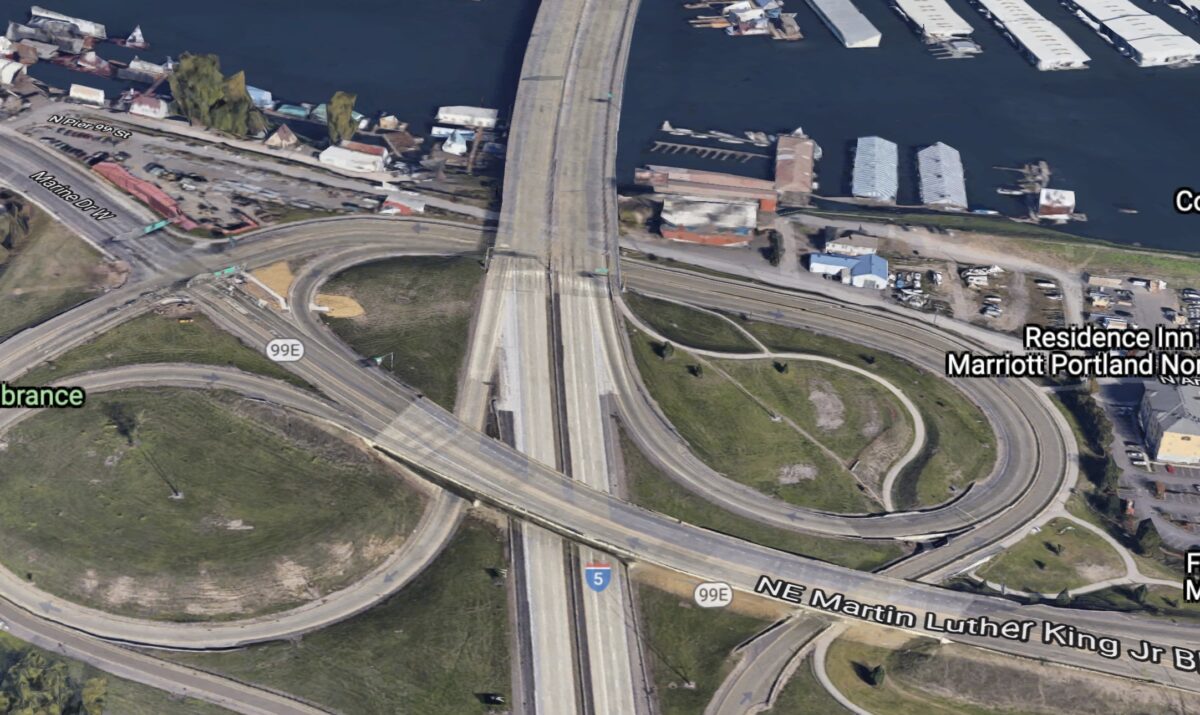
It’s not clear how much leverage local leaders will have to press for major changes after this point.
This Thursday (1/6) Metro Council will vote on whether to allocate $35 million to the Interstate Bridge Replacement (IBR) program, funding that would allow the five-mile highway project to move forward into a “preliminary engineering” (PE) phase, a precursor to full design. This vote, which was originally scheduled to take place in early December but was delayed after Metro failed to give adequate notice of the hearing, will be a rare public hearing on the project and one of the few junctures where elected officials will take an official stance on whether the estimated $4.5 billion expansion of I-5 between Oregon and Washington should move ahead.
The outcome of the vote is not really in doubt. So far no regional electeds have voted against more funding for the project, with Councilor Mary Nolan and their outspoken questioning of major aspects of the project serving as an outlier.
Councilor Juan Carlos Gonzalez, who voted yes on an earlier stage of the same funding allocation at Metro’s Joint Policy Advisory Committee on Transportation (JPACT), has said his vote this week is dependent on the answers to two specific questions:
First: “Can you confirm that there has been no definitive decision made on project design including the [Locally Preferred Alternative], and that the PE phase will work with community to identify project elements and co-create design?” The LPA will be the final design of the project that is subjected to environmental review. No definitive decision has been made, but there is a rush to get one by the end of June. So far all three designs for the highway itself on either side of the river look very similar to the LPA that was arrived at ten years ago with the Columbia River Crossing (CRC) project: none differ in their capacity for traffic, with ten traffic lanes each.
Advertisement
[Traffic] volumes were about 15,000 vehicles per day below where the assumptions in the CRC predicted they’d be in 2019.
The second question: “Can you confirm that this phase of PE will analyze alternatives that include congestion pricing, induced demand, high capacity transit and GHG emission reduction?” This is the primary ask that Metro President Lynn Peterson and Commissioner Jo Ann Hardesty have made of the project team: to conduct modeling that shows what the impact of additional transit investments, paired with progressive congestion pricing options, would be. (We should be seeing the result of the modeling in the next few months.)
“When I see the modeling the comes back, I want to see that we’re committed to multimodal transportation, that we’re not allowing traffic to be diverted into neighborhoods… that we’re not only interested in funding a bridge, but we’re funding the other transportation components that are attached to the bridge, so it is my hope that when you come back with these options, that will be the make-or-break moment for us,” Hardesty said at the JPACT meeting in November. But it’s not clear how much leverage local leaders will have to press for major changes after this point.
The committee that will ultimately sign off on the project, made up of state legislators from both states, isn’t asking very many questions about the project apart from “how fast can it be built”. It doesn’t include any vocal skeptics like Councilor Nolan. Rep. Khan Pham, who wrote a letter to Metro asking them to hold off on funding, doesn’t serve on the project’s legislative committee. Other climate change-focused officials, like Multnomah County Commissioner Susheela Jayapal, clearly see the Metro vote as a pivotal moment. Jayapal wrote via Twitter November 22nd that, “… any funding of the IBRP be conditioned upon an agreement to develop alternatives that show a commitment to addressing climate change, including through a holistic analysis of robust transit options and equitable congestion pricing focused on curbing gas emissions and reducing vehicle miles traveled.”
While we wait for results of modeling on these issues, the project team has previewed some of the data being used to generate them. Traffic volumes, last updated in 2005 for the CRC, show that traffic on the I-5 bridge grew just 0.3% per year since that time — and those are pre-pandemic, 2019 numbers. That’s just a fraction of the annual growth (1.3%) projected for the CRC and means volumes were about 15,000 vehicles per day below where the assumptions in the CRC predicted they’d be in 2019.
Freight traffic is growing at a much faster rate than general purpose traffic (chart at right), which only increased 4.3% total over those fourteen years. So far, dedicated space for freight across the river hasn’t really been a part of the discussion but given the centrality of freight in discussions about the future highway, perhaps it should be.
Traffic on the I-205 bridge has grown faster than on I-5, but still not as fast as the CRC forecasts assumed either. Together both bridges are about 30,000 vehicle trips behind where the CRC said they would be. This points to taking any future predictions of dramatic increases in traffic with a boulder of salt.
In the next six months, the IBR team is looking to get elected leaders to sign off on what the project will look like. The original timeline for that was the end of March, but the questions being asked by people like Councilors Nolan and Gonzalez are requiring more time to answer. That additional time may prove vital to improving the IBR, or we may just end up delaying the return of the CRC.
The IBR at Metro: Thursday, January 6th from 10:30 am to 1:00 pm. Zoom link and meeting materials here.


